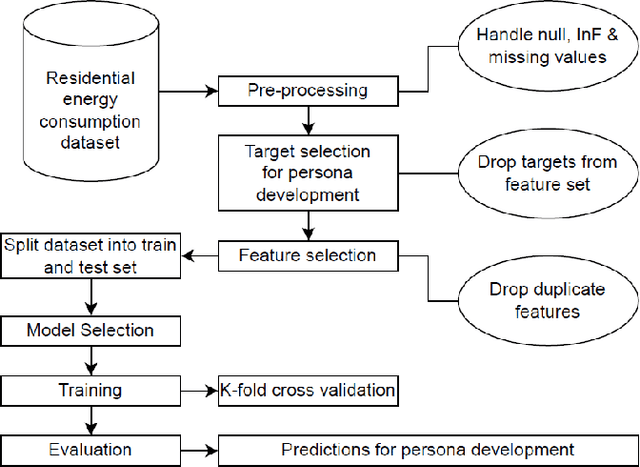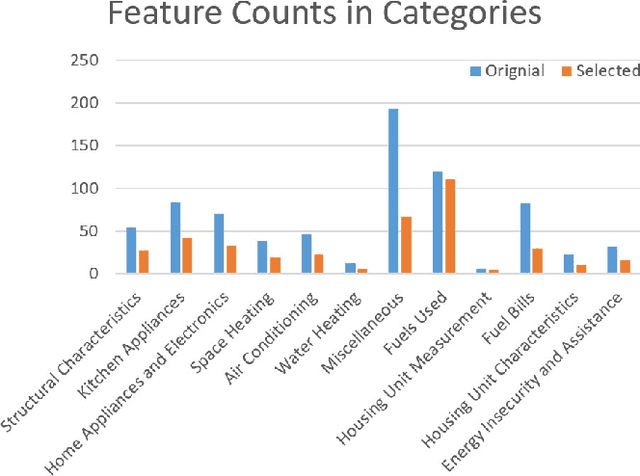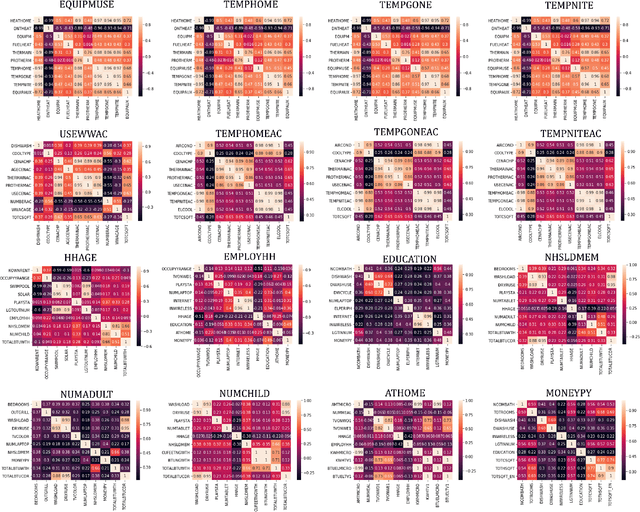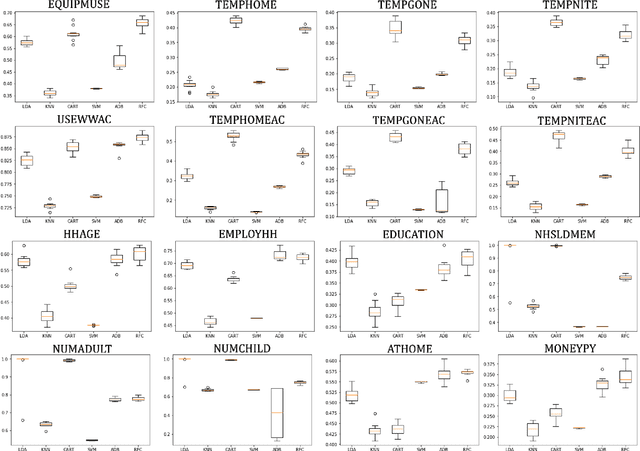Sheik Murad Hassan Anik
A Comprehensive Indoor Environment Dataset from Single-family Houses in the US
Oct 05, 2023Abstract:The paper describes a dataset comprising indoor environmental factors such as temperature, humidity, air quality, and noise levels. The data was collected from 10 sensing devices installed in various locations within three single-family houses in Virginia, USA. The objective of the data collection was to study the indoor environmental conditions of the houses over time. The data were collected at a frequency of one record per minute for a year, combining over 2.5 million records. The paper provides actual floor plans with sensor placements to aid researchers and practitioners in creating reliable building performance models. The techniques used to collect and verify the data are also explained in the paper. The resulting dataset can be employed to enhance models for building energy consumption, occupant behavior, predictive maintenance, and other relevant purposes.
Machine learning approach in the development of building occupant personas
Jul 19, 2022



Abstract:The user persona is a communication tool for designers to generate a mental model that describes the archetype of users. Developing building occupant personas is proven to be an effective method for human-centered smart building design, which considers occupant comfort, behavior, and energy consumption. Optimization of building energy consumption also requires a deep understanding of occupants' preferences and behaviors. The current approaches to developing building occupant personas face a major obstruction of manual data processing and analysis. In this study, we propose and evaluate a machine learning-based semi-automated approach to generate building occupant personas. We investigate the 2015 Residential Energy Consumption Dataset with five machine learning techniques - Linear Discriminant Analysis, K Nearest Neighbors, Decision Tree (Random Forest), Support Vector Machine, and AdaBoost classifier - for the prediction of 16 occupant characteristics, such as age, education, and, thermal comfort. The models achieve an average accuracy of 61% and accuracy over 90% for attributes including the number of occupants in the household, their age group, and preferred usage of heating or cooling equipment. The results of the study show the feasibility of using machine learning techniques for the development of building occupant persona to minimize human effort.
 Add to Chrome
Add to Chrome Add to Firefox
Add to Firefox Add to Edge
Add to Edge